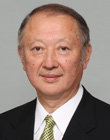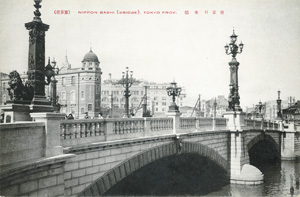Top>Opinion>2020 Tokyo Olympics—Bringing Change
 Index
Index

Hiroshi Narita [profile]
2020 Tokyo Olympics—Bringing Change
Hiroshi Narita
Specially Appointed Professor, Faculty of Economics, Chuo University
Areas of Specialization: Urban Management, Local Government Finance
Responding to Concerns
The Governor of Tokyo, Yoichi Masuzoe, recently announced a review of the city’s Olympic facilities, clarifying his policy of conducting a rethink in terms of (1) the use of existing facilities including those in neighboring prefectures, (2) the compression of costs by reassessing maintenance and construction methods, and (3) environmentally friendly venue designs. Details will be revealed later, starting with a review of the improvement plans for Kasai Rinkai Park where the canoeing competition is to be held. The facility improvement costs shown in the candidate file were 153.8 billion yen, but the latest calculations are in excess of 380 billion yen and so a financial review is essential.
But currently, the review has been limited to the various Olympic facilities, which can be referred to the “dots” so to speak, where it should also include an immediate presentation of a blueprint for Tokyo that puts into perspective the access between facilities and to airports, which would be the “lines,” and urban planning for Tokyo in 10 or 20 years time as well, which would make the “surfaces.” Concerns are also being voiced these days about the objective of the Games, that “it should really be about boosting reconstruction from the earthquake disaster,” and that “the fruits of hosting the Olympics will be concentrated mainly within Tokyo, further widening the gap between the capital and the regions.” The Tokyo metropolitan government must make every effort to dispel such fears and malcontent throughout the regions.
Blue Skies Over Nihonbashi, Again

Original view of Nihonbashi Bridge
Photo: Chuo City Kyobashi Library
Exactly 50 years ago, waterways including rivers and canals were being filled in to build expressways in a race against time before the last Tokyo Olympics. The expressway that stretches above Nihonbashi Bridge has become a symbol of such construction. At the time it was seen as an unavoidable choice, but in the run-up to 2020 I sincerey hope that we can remove this negative legacy of the previous Tokyo Olympics, which sacrificed the environment in such ways. Today, the renewal of the Shuto Expressway is an urgent task as recommended by the Advisory Council on the Metropolitan Expressway, which has put forward alternatives such as demolishing the elevated section of the Shuto Expressway’s Inner Circular Route and rebuilding it underground.
Considering the burden of future users, whenever construction of the three ring roads, the Central Circular Route, Tokyo Outer Ring Road, and Metropolitan Inter-City Expressway, is completed, we should look seriously at demolishing the Inner Circular Route and resurrecting the various waterways to create a corridor of water and greenery. According to the calculations of the Road, River and Town Planning Association, this would have the added benefit of incurring only one tenth of the cost of underground construction. In neighboring South Korea, restoration of the stream in Cheonggyecheon, Seoul was achieved under the firm leadership of the city’s mayor, Lee Myung-bak, who later went on to become the country’s president. I would like for this to be a lesson to Tokyo, which in the Edo period was also known as the “lagoon city.”
The Memorable Year of Welcoming Foreigners
During the previous Tokyo Olympics held around 20 years after the Second World War, many foreigners, including tourists and fans from around the world visited Japan. It was Japan’s first year as a tourist destination, so to speak. Last year, the number of visitors from abroad exceeded the long-cherished target of 10 million, and with 2020 in mind, the recent Ministerial Council on the Promotion of Japan as a Tourism-Oriented Country pointed toward a time when there will be 20 million foreign visitors to Japan. Despite the positive outlook, there is also growing awareness of a future sharp fall in the country’s population, which calls for a prescription right away. Tokyo, too, will enter its first ever period of population decline from 2020. It is doubtful that the vitality of this society will be maintained by simply increasing opportunities for women and older people. Japan needs to take a clearer position about the issue of accepting foreign workers and foreigners, which has been put off for a while.
The current labor shortage at construction sites and nursing and medical facilities is a huge social problem, in response to which the government has set out to enhance and expand its skill training system for foreigners, but this stopgap measure is not expected to resolve matters. We should make use of the valuable experience of efforts led by local authorities for multicultural society with foreigners. I would like to set a goal of making 2020 the Year of Welcoming Foreigners for ordinary citizens and residents. A fifth of the two million or so foreign residents in Japan are already working and living in the capital, but how about if the metropolitan government under Governor Masuzoe, himself richly experienced in living abroad, spoke up more actively and launched a series of concrete measures to make Tokyo an even more cosmopolitan city? Would this not become a selling point for the Masuzoe administration?
City with a Universal Design
It is not widely known that Tokyo is the first city in the world to host the second Paralympic Games. Following this, it is hoped that Tokyo will promote barrier-free access and a universal urban design that it can show off to the world. My personal suggestions are (1) building urban spaces that facilitate the use of strollers, and (2) removing the obstacle of pedestrian bridges by making them all barrier-free.
In spite of recent calls for support with raising children, transportation facilities and urban structures still include many inconvenient features for parents using strollers. The Ministry of Land, Infrastructure, Transport and Tourism has set up a committee to propose improvements, and I have hopes for the resulting public and private initiatives. A stroller-friendly town will also be easier for the elderly and other infirm people to live in.
Pedestrian bridges, all erected during the time of the so-called “traffic war,” number around 600 for the Tokyo municipal roads in the Tokyo Metropolitan Area. The number of pedestrian bridges, many of which are over 40 years old, exceeds 10,000 nationwide. Using a method of facility classification, those that have outlived their purpose will be demolished. At pedestrian bridges that are vital for communities, however, barrier-free measures such as elevators should be installed immediately. The sight of pedestrian bridges straddling highways is not appropriate for a cosmopolitan city. From the perspective of urban landscape, urban disaster prevention, and people-friendly urban planning, I hope that Tokyo moves toward being a city without pedestrian bridges.
Legacy as a Festival of World Peace
The phantom Tokyo Olympics of 1940 were awarded to Japan due to the efforts of Jigoro Kano and others working for international peace, but were sadly returned to the IOC as the threat of war deepened.
Recent relations between Japan, China and South Korea are in a difficult and unpredictable state. In the circumstances, couldn’t Governor Masuzoe, who is entrusted with Tokyo Metropolitan Government diplomacy, not to mention Prime Minister Abe, help to ease tensions by patiently building closer, friendlier ties with Tokyo’s sister cities, Beijing and Seoul? This would be a task well-suited to Governor Masuzoe, a scholar of international politics. Wouldn’t the 2020 Tokyo Olympics then become an extension of such ties? For me, the legacy of the 2020 Tokyo Olympics will be to present to the world a clear image of recovery after the Tohoku earthquake and tsunami, and to fulfill Japan’s role as the standard-bearer of peace in Asia.
- Hiroshi Narita
Specially Appointed Professor, Faculty of Economics, Chuo University
Areas of Specialization: Urban Management, Local Government Finance -
Professor Narita was born in Fukuoka Prefecture in 1947.
After graduating from the Faculty of Law, University of Tokyo in 1971, he entered the Tokyo Metropolitan Government (TMG).
At TMG, he served as a representative in New York, General Affairs Manager of Tokyo Big Sight, Budget Manager of the Finance Department, Deputy Director General of the Cabinet Secretariat Urban Renaissance Headquarters (on loan), Director General of the Bureau of Port and Harbor, and Director General of the Bureau of Industrial and Labor Affairs. He later served as Auditor of the Council of Local Authorities for International Relations and Director in charge of the JET Programme and multicultural society before taking up his current position in 2012.
He also serves as a lecturer at Meiji University Graduate School of Governance Studies, Chair of the Ota City Multicultural Promotion Council, Director of the Tokyo Headquarters of the United Nations Association of Japan, and Acting Chair of the Tokyo Metropolitan Government Development Investigation Committee.
- Research Activities as a Member of Research Fellowship for Young Scientists (DC1), Japan Society for the Promotion of Science (JSPS) Shuma Tsurumi
- Important Factors for Innovation in Payment Services Nobuhiko Sugiura
- Beyond the Concepts of Fellow Citizens and Foreigners— To Achieve SDGs Goal 10 “Reduce Inequality Within and Among Countries” Rika Lee
- Diary of Struggles in Cambodia Fumie Fukuoka
- How Can We Measure Learning Ability?
—Analysis of a Competency Self-Assessment Questionnaire— Yu Saito / Yoko Neha - The Making of the Movie Kirakira Megane








